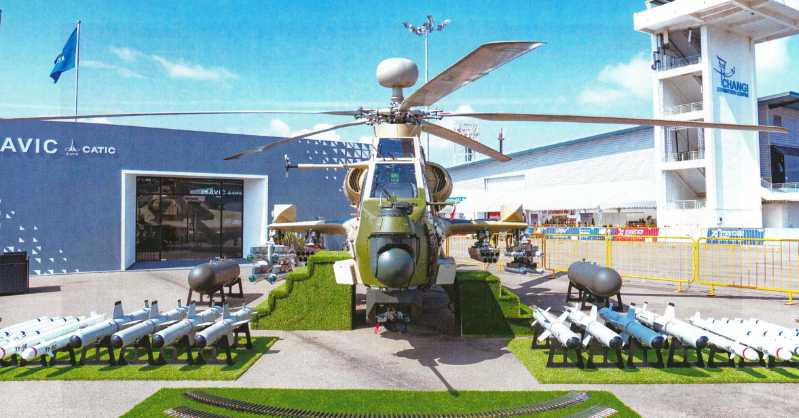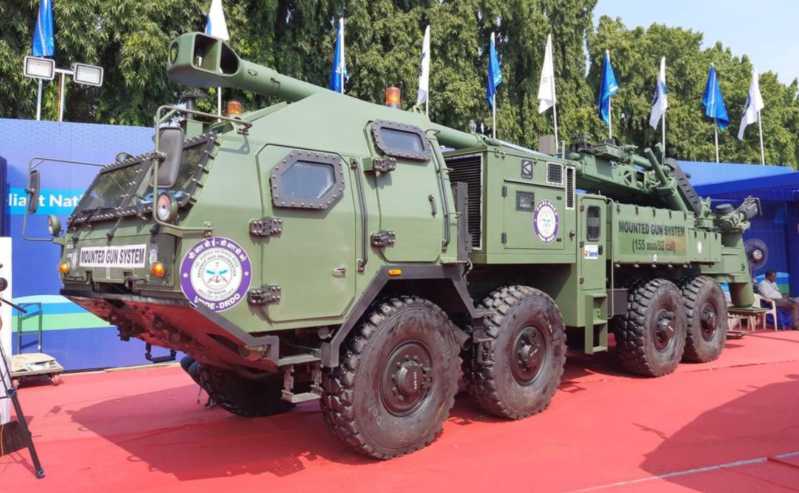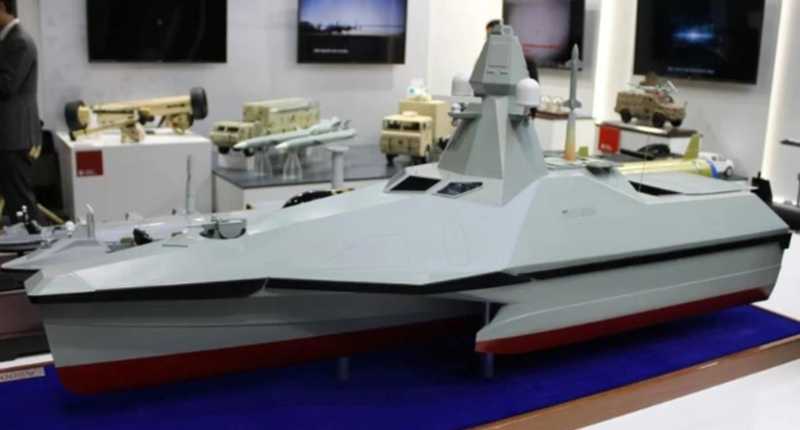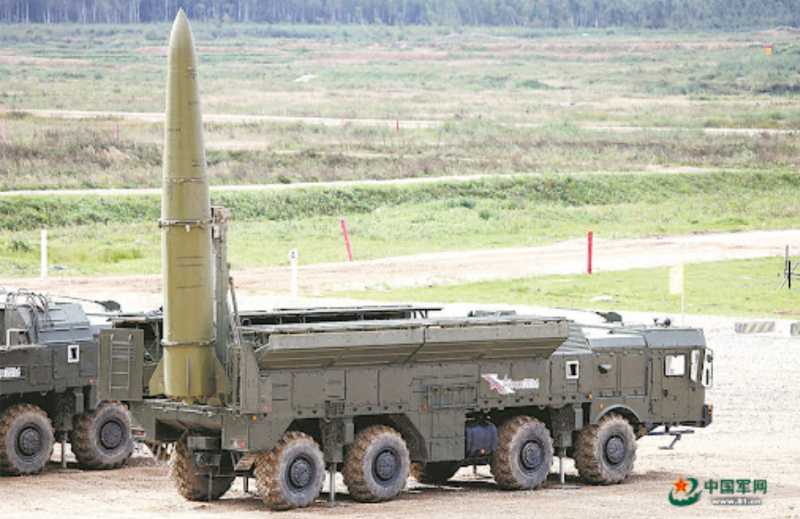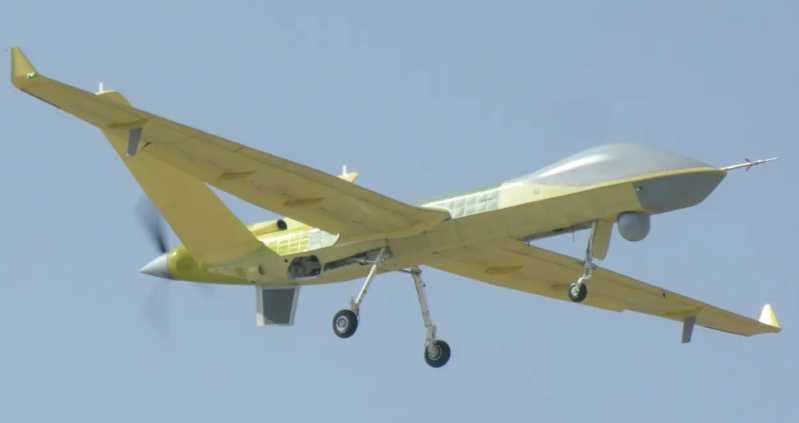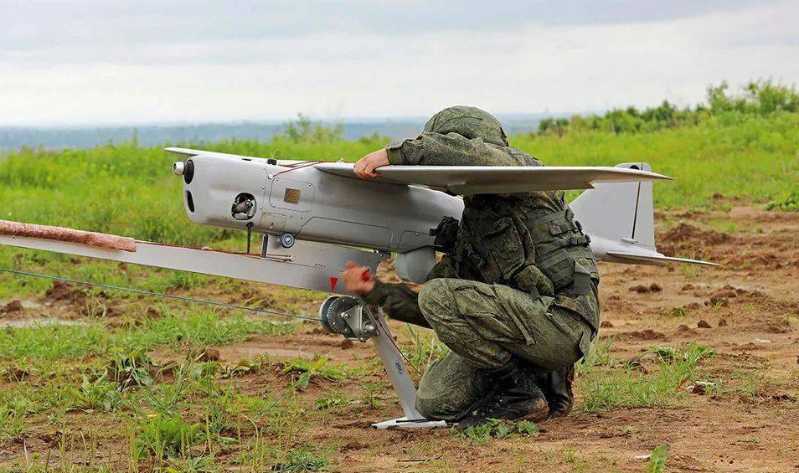At the just concluded 2024 Singapore Air Show, China exhibited a real Z-10ME armed helicopter. The attention this helicopter has attracted internationally can be described as "a blockbuster", not only because this is the first time that a real domestic helicopter has appeared at an international air show, but also because this Z-10ME has too many advanced concepts and designs that are ahead of traditional foreign armed helicopters, making it the top model in the world’s armed helicopters!
The helicopter on display is the 02 prototype of the Z-10ME. In 2018, the 01 prototype of the Z-10ME made its debut at the Zhuhai Air Show. Compared with the basic Z-10 model, the ME model has added an engine air intake dust filter and an infrared suppression exhaust pipe, and additional armor plates on both sides of the cockpit and engine compartment. At the same time, an additional bomb bay for the machine gun is added to the bottom of the fuselage, and it is connected to the main bomb bay of the nose through an external ammunition belt on the left side of the fuselage, so that the cannon’s ammunition load is increased to 3 times that of the basic model. These improvements are believed to be targeted improvements based on feedback from foreign military actual combat trials of the basic model of the Z-10.
The Z-10ME 02 prototype was born after further in-depth improvements on the basis of the 01 prototype. Compared with the 01 prototype, which mainly enhanced passive defense capabilities, this aircraft has greatly enhanced its perception and long-range strike capabilities, and adopted a new system of active defense systems, which has made a qualitative leap in combat capabilities and battlefield survivability. The advanced level of some of these concepts and equipment has far exceeded the current international top armed helicopters represented by the US AH-64 "Apache", Russian Ka-52, Mi-28 and other armed helicopters, which is also the main reason why the Z-10ME’s participation in this exhibition has attracted strong international attention. Today we will take a closer look at this helicopter inside and out to see what exactly is so "exceptional" about it!
The most advanced helicopter-mounted mast-top radar in the world
The most impressive thing about the Z-10ME 02 is the airborne radar installed on the top of the rotor. Because it is installed above the main shaft of the rotor, it is also called the "mast-top radar"
The world’s earliest mast-top radar is the AN/APG-78 "Longbow" millimeter-wave fire control radar developed by the US Army. It began to be equipped on the AH-64D "Longbow Apache" armed helicopter in 1997. The radar uses millimeter waves with a very short wavelength, which can penetrate obstacles such as trees and building windows. If the power is sufficient, it can even penetrate the walls of buildings to detect targets behind the walls. It has high detection accuracy and imaging capabilities. It is currently the only band that can overcome the interference of complex ground terrain for effective detection. Its disadvantage is that the attenuation is more serious, so the detection distance of millimeter-wave radar is much closer than that of ordinary radar.
The success of the "Longbow" radar soon led to other countries following suit. Russia also developed the N025 mast-top radar for the Mi-28 armed helicopter. Its Mi-28NM armed helicopter equipped with the mast-top radar made its first flight in 2011. However, due to the delay in the development of the radar, it was not until 2016 that combat tests were carried out in Syria. It was not until 2019 that it was officially put into production and equipped to the troops. The current equipment volume is very limited.
China equipped helicopter mast-top radars even earlier than Russia. As early as the 2017 Tianjin Helicopter Expo, the PLA Army Aviation publicly displayed its Z-19 armed reconnaissance helicopter equipped with mast-top radars. In the following years, two different mast-top radars appeared on the Z-19. However, the PLA’s mast-top radar seems to be only equipped on the Z-19, which is mainly used for battlefield reconnaissance, and the main armed helicopter Z-10 has never been equipped.
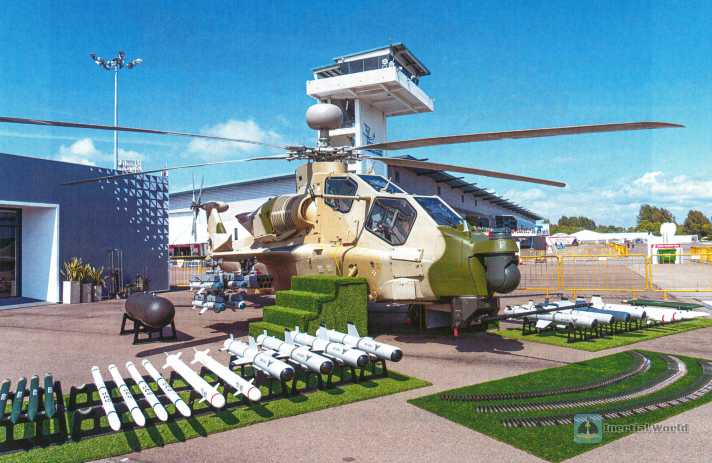
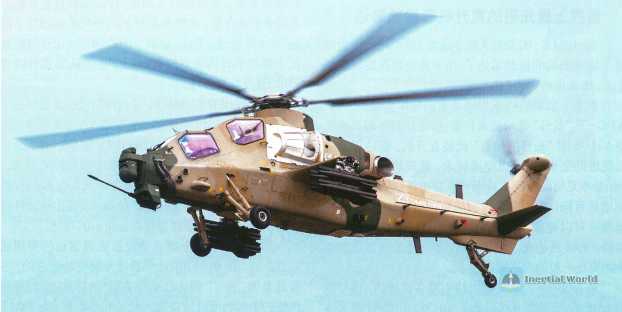
The Z-10ME on display this time has a mast-top radar that is obviously a transplant of one of the Z-19 radar models. This radar is in the shape of a round pancake, consisting of two radar arrays installed back to back and a base in the middle. It also uses millimeter waves. Public information shows that it is an active phased array radar. The mast-top radar can rotate 360 degrees as a whole, thereby achieving omnidirectional detection coverage by combining phase scanning and mechanical scanning. The radar also has the function of providing target indication for millimeter-wave guided air-to-ground missiles.
As the third dedicated armed helicopter equipped with a mast-top radar in the world, the Z-10ME’s radar is undoubtedly the most advanced. Whether it is the US "Longbow" radar or the Russian N025 radar, both use traditional single parabolic mechanical rotating antennas. In comparison, the active phased array radar used by the Z-10ME has the characteristics of high power, high gain, and flexible waveform shaping. Whether it is detection distance, accuracy or multi-target processing capabilities, it far exceeds ordinary parabolic radars.

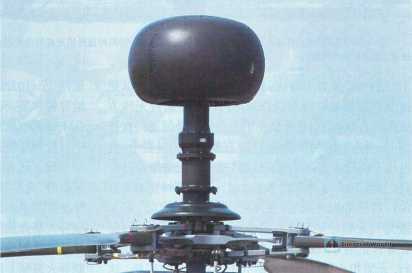
Z-10ME’s masthead radar has a maximum detection distance of more than 20 kilometers, and has excellent recognition ability, detection accuracy, anti-interference ability and multi-target processing ability. In comparison, the early version of the "Longbow" radar, which was developed earlier, has a maximum detection distance of only 8 kilometers, and even the latest "Baseline 6" version that has been improved can only reach 16 kilometers; and although the N025 is also said to have a maximum detection distance of 20 kilometers, it has always been plagued by the resonance problem caused by the mechanical scanning method and the rotor, and its accuracy is poor. Although it has been partially solved by adding a three-axis stabilization system, its performance in the Russian-Ukrainian battlefield is not ideal, and the recognition rate of ground targets is not high. The Z-10ME radar uses two sets of phased array antennas installed back to back, so the radar can scan the target twice in one rotation, and the data refresh rate is very high. The T/R module of the digital array can allocate different modules for wide-beam search and narrow-beam tracking, thereby realizing the search, tracking and missile guidance of multiple different targets at the same time. This system has low requirements for the mechanical rotation mechanism of the radar, so the Z-10ME radar is the simplest in structure and lightest in weight, and has the least impact on the flight performance of the helicopter.
In addition, China’s concept of using masthead radar is different from that of the United States and Russia. The original intention of the development of masthead radars in the United States and Russia was to use them as guidance radars for millimeter-wave radar-guided air-to-ground missiles. In fact, the performance of these two radars is only enough to do this. China’s radar performance is stronger, so it can be used as an air battlefield monitoring and reconnaissance radar for comprehensive detection and monitoring of the entire battle area, providing information support for all combat units in the combat area. Transplanting it to the Z-10ME armed helicopter only provides stronger and longer battlefield perception capabilities based on the aircraft’s already excellent optical sighting system, and guiding air-to-ground missiles is only its part-time job.
Z-10ME can be seen as a combat combination formed by the Z-10 and Z-19 helicopters in the PLA Army Aviation combat system, merged into one helicopter, so that it has the ability to independently complete long-range search, aiming and strike. For a large-scale and extremely complete army aviation force like the PLA Army Aviation, it is obviously more powerful to have different models perform their respective duties to improve the overall combat capability. For small countries with smaller scale and lack of complete systems, this type of armed helicopter that focuses on single-machine capabilities is obviously more popular.
A new generation of precision-guided air-to-ground weapons
With stronger and longer battlefield perception capabilities, air-to-ground strike means with longer range are also needed to fully play their role. However, although the Z-10ME displayed this time is equipped with a mast-top radar, the air-to-ground missiles displayed with it do not have millimeter-wave radar-guided air-to-ground missiles like the "Blue Arrow 21", but the CM-502KG long-range air-to-ground missile with a new generation of guidance system.
CM-502KG is a small-sized, long-range multi-purpose air-to-ground missile that can be mounted on armed helicopters and used on integrated reconnaissance and strike drones. The size of the missile is similar to that of the AKD-10 air-to-ground missile, with a warhead weight of 11 kg and a total weight of no more than 50 kg. Therefore, it can be mounted on a quadruple mount like the AKD-10, allowing the Z-10ME to still maintain a large number of missiles. Although the size and weight have not increased, the maximum range of the missile is 25 kilometers, which is 3 to 4 times that of the AKD-10 missile. This range has exceeded the range of almost all active field air defense missile systems in the world, so armed helicopters can carry out long-range strikes on targets in a very safe environment without worrying about the threat of enemy air defense firepower.
At the same time, this range is beyond the visual range and the range of general optical sighting equipment. Therefore, the missile adopts a new generation of "non-direct aiming guidance system" with day and night optical imaging + two-way data link guidance. The missile uses an optical imaging seeker with day and night functions. It can not only autonomously search, lock and attack targets by image comparison, but also transmit the target image obtained by the seeker back to the helicopter wirelessly through the two-way data link. The pilot on the helicopter directly controls the missile and manually identifies and locks the target. During the entire attack process, the sighting equipment on the helicopter does not directly participate in the guidance. There is no need to maintain continuous laser irradiation like the AGM-114 "Hellfire" laser semi-active guided missiles, let alone Unlike laser beam-riding guided missiles such as the Russian Tornado, which require a helicopter to stay stably behind the missile, the carrier aircraft can perform various maneuvering flights without worrying about the interruption of guidance and the missile missing the target. This new guidance method realizes the real fire-and-forget, further improving the safety of the carrier aircraft and the success rate of the missile attack.
Different from the direct-flight trajectory of the previous generation of laser semi-active guided missiles that fly directly to the target at high speed, the CM-502KG adopts a high-throw trajectory, coupled with the greater lift provided by the cruise missile layout, which is the main reason why the missile can achieve a longer range. Of course, this will sacrifice certain speed indicators. The missile immediately accelerates upward after launch, relying on the imaging device installed slightly downward in the warhead. The seeker looks down at the ground in the air to find the target. Once the target is found and locked, it dives until it hits the target. In this process, the pilot on the helicopter can also temporarily modify the attack target, so it has great attack flexibility.
In fact, China has long recognized that this type of "non-direct aiming" long-range air-to-ground missile has better combat effectiveness and is the direction of future development. Therefore, it is not active in developing millimeter-wave radar-guided air-to-ground missiles based on the previous generation of laser semi-active guided air-to-ground missiles, but directly uses its main resources to develop a new generation of long-range imaging-guided air-to-ground missiles. The PLA Army Aviation has gradually equipped a new generation of air-to-ground missiles with three strike ranges: long (20-30 kilometers), medium (10-20 kilometers), and short (less than 10 kilometers). The ground-to-ground missile system, without exception, all adopts the imaging guidance system. The domestic version of CM-502KG is believed to be the medium-range missile in this system.

search, aiming and attack
In addition to this new missile, the Z-10ME also displayed a new guided rocket system called "Fire Snake 70". The system uses a 7-unit 70mm caliber launcher, equipped with GR-5 (FS70A) simple guided rockets and FS70B unguided killing rockets. GR-5 uses simple inertial guidance with a maximum range of 6,000 meters, and can be modified by adding a simple guidance component to the unguided rocket, which can greatly improve the accuracy of the rocket. Although the accuracy is not as good as the simple laser guidance used by the United States, it is cheaper and more cost-effective. After all, the original advantage of rockets is that they are cheap and suitable for large-scale use against low-value, unprotected surface targets. If the pursuit of accuracy leads to high prices, it is better to use a missile with higher accuracy to solve the problem more simply and effectively.
Through the powerful battlefield perception capability and these long-range precision ground strike weapons, the Z-10ME can establish an effective "killing zone" within a range of 20-30 kilometers around itself in areas far away from enemy air defense threats, and carry out long-range strikes on enemy ground targets. It is completely unnecessary for the armed helicopters of both sides to forcibly break through the enemy’s dense air defense firepower at the cost of huge losses, or use inefficient upward long-range rocket salvos to reduce the chance of being attacked by enemy firepower, as in the Russian-Ukrainian battlefield. This strike mode also allows the Z-10ME to not use its limited take-off weight on its heavy armor, but only need to add an appropriate amount of external armor plates to defend against the shooting of individual light weapons. Many previous armed helicopter battles have shown that no matter how much armor is piled on the fuselage, it is impossible to escape unscathed under dense air defense firepower. Instead of doing this, it is better to find a way to prevent the helicopter from entering the enemy’s dense air defense firepower killing range. The most effective way is to achieve dimensionality reduction strikes in places where the enemy’s firepower cannot reach.
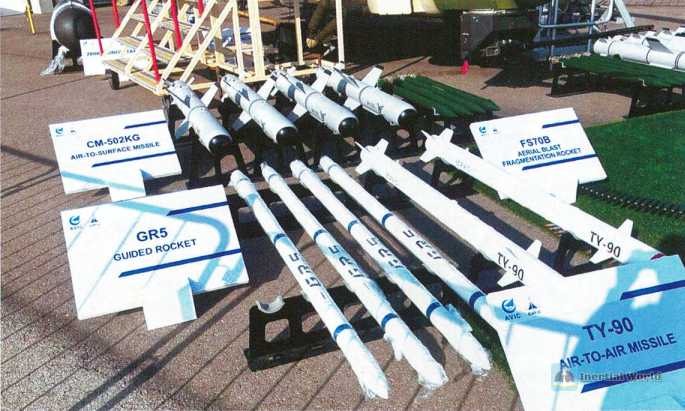

A new concept of self-defense system that leads the world trend
Although the Z-10ME has a strong long-range "non-contact, non-direct aiming" combat capability, in many cases, it still has to fly into the enemy’s air defense firepower, such as escorting and fire support for transport helicopter formations performing air assault missions. This is also the original mission design that promoted the birth of armed helicopters. Although such missions will definitely receive full cover from the Air Force’s fixed-wing aircraft, they will still inevitably encounter various mobile field air defense systems that have escaped the net and individual air defense missile threats that appear without any signs during the flight behind enemy lines. Therefore, it is still essential to have a strong self-defense capability.
The self-defense system of the Z-10ME is the biggest highlight of the aircraft! This is also the most advanced and complete helicopter self-defense system I have ever seen in the world. Even the Ka-52 and Mi-28 currently fighting in the Russian-Ukrainian battlefield, or the latest version of the US AH-64, or the MH-60M dedicated to special operations missions, have never been equipped with such an advanced and complete self-defense system! The biggest feature of this defense system is that it adopts a new integrated active defense concept.
At present, the armed helicopters in service in various countries around the world all adopt passive defense methods. Their passive defense systems are mainly composed of the following units:
1. Passive Missile Approach Warning System (MAWS) in ultraviolet or infrared mode
2. Full-band omnidirectional radar warning receiver (RWR)
3. Laser warning receiver
The working principle of the passive defense system is to detect threats through MAWS, RWR and laser warning systems, and command the jammer transmitter to launch corresponding jammers to interfere with and deceive incoming missiles. Some helicopters are also equipped with broad-spectrum infrared jammers, but the jamming effect of such jammers is limited. This completely passive defense method cannot guarantee the success rate of defense. Whether it can effectively interfere with the incoming missile and make it miss the target depends on luck most of the time!
But the new concept integrated active defense system of the Z-10ME is completely different. This system consists of the following units:
1. Laser/active and passive composite missile approach warning system
2. Radar reconnaissance/warning/interference equipment
3. Infrared directional jamming equipment (DIRCM)
These devices are installed in the four antennas on each side of the belly and the nacelle above the top of the short wing. The first and third antennas on each side from front to back integrate the laser/active and passive composite missile approach warning system, and the second and fourth antennas are radar reconnaissance/warning/jamming equipment. The antennas of all equipment are installed at a 45-degree angle to the front and back, forming a 360-degree full coverage; and one DIRCM on each side is installed in the spindle-shaped nacelle at both ends of the short wing.
Among these equipment, the infrared directional jamming equipment (DIRCM) is currently the only equipment equipped on other armed helicopters. This jamming equipment uses the missile attack direction information provided by MAWS to aim the optical launch turret in the equipment in the direction of the missile, and launches a narrow-beam mid-infrared laser beam to interfere with the normal operation of the seeker or even directly blind the seeker, eventually causing the missile to miss the target. DIRCM is the most effective equipment for dealing with infrared-guided missiles, and its effect in actual combat is also very outstanding. A large number of Russian armed helicopters equipped with this system on the Russian-Ukrainian battlefield have successfully defended against a large number of single-soldier infrared-guided missile attacks through this system. One Ka-52 helicopter even successfully jammed 15 missiles in one combat operation. Without this system, the Russian helicopter force will suffer losses far more than the current 60 helicopters when facing thousands of individual air defense missiles launched by Ukraine. It is likely to be hundreds! The two DIRCMs of the Z-10ME are installed at both ends of the short wings, which are the outermost positions of the helicopter. The two hemispherical launch turrets are installed outwards, which can cover the left and right hemispheres of the helicopter respectively, forming all-round protection for the helicopter. However, DIRCM is extremely dependent on MAWS to provide accurate information on the location of incoming missiles. The previous passive system MAWS relies on detecting ultraviolet rays in the tail flame of the missile to detect incoming missiles. It can only provide azimuth information, but cannot provide information on the speed, distance, and flight direction of the missile. It cannot detect after the missile engine is shut down, and it is impossible for the helicopter pilot to know whether the missile is flying towards the helicopter or somewhere else. Therefore, the effectiveness of DIRCM cannot be maximized. When multiple missiles attack, it is inevitable that one will lose another. There are also helicopters equipped with DIRCM that were shot down in the Russian-Ukrainian war, all of which occurred under this situation.
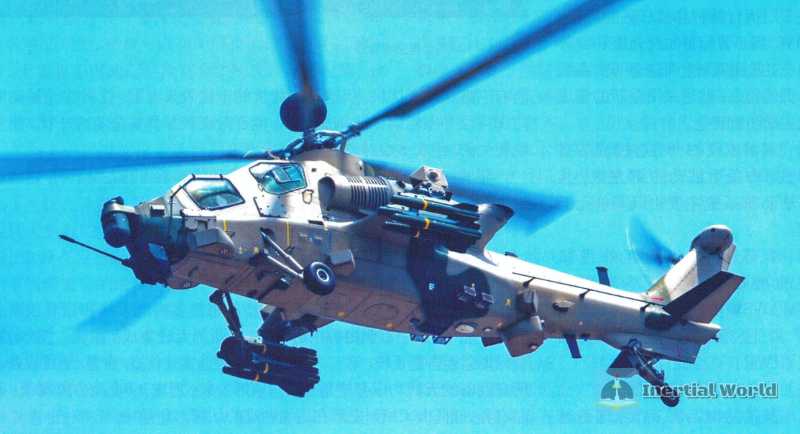
The laser/active-passive composite missile approach warning system of the Z-10ME, in addition to integrating a laser warning receiver for warning of laser irradiation, also adds an active MAWS using a pulse Doppler (PD) system on the basis of integrating ultraviolet passive MAWS. In fact, when the concept of MAWS was first proposed, there were three development directions: ultraviolet, infrared, and PD radar. At that time, infrared imaging technology was immature and easily affected by environmental interference, causing false alarms; PD radars were heavy and had insufficient resolution to effectively distinguish incoming missiles in complex ground environments, so they were mostly used for fixed-wing aircraft flying at higher altitudes; and the ultraviolet system can detect the unique ultraviolet spectrum in the missile tail flame, with a low false alarm rate and a simple structure.
Related reading
- 国产大飞机海外首秀:中国商飞C919和ARJ21飞行展示
- Domestic large aircraft overseas debut: COMAC C919 and ARJ21 flight demonstration
- 从美军B-52H战略轰炸机双机通场新加坡航展说起
- 近距离观察F-35A隐形战斗机
- 近观新加坡F-15SG战斗机
- 我进入了F-16D的座舱
- 新加坡航展上的萨博“鹰狮”JAS-39战斗机
- 我当上了苏-30的飞行员--苏-30MKM战机前的超强体验
- 中国的“老朋友”--来自冲绳的P-8A反潜巡逻机
- 又见C-17运输机
- 公开展示的“阿帕奇”武装直升机
- 静态展示的CH-47F“支努干”重型运输直升机
- KC-135下的漫步,不得不说的硬管加油装置
- 细看新加坡“紫菀”-30防空导弹
- 先进机型齐亮相---新加坡航展上的中航展台
- 混动装甲战车--新加坡“特雷克斯s5”轮式装甲车管窥
- 2024年新加坡航空展室内展台参观记


